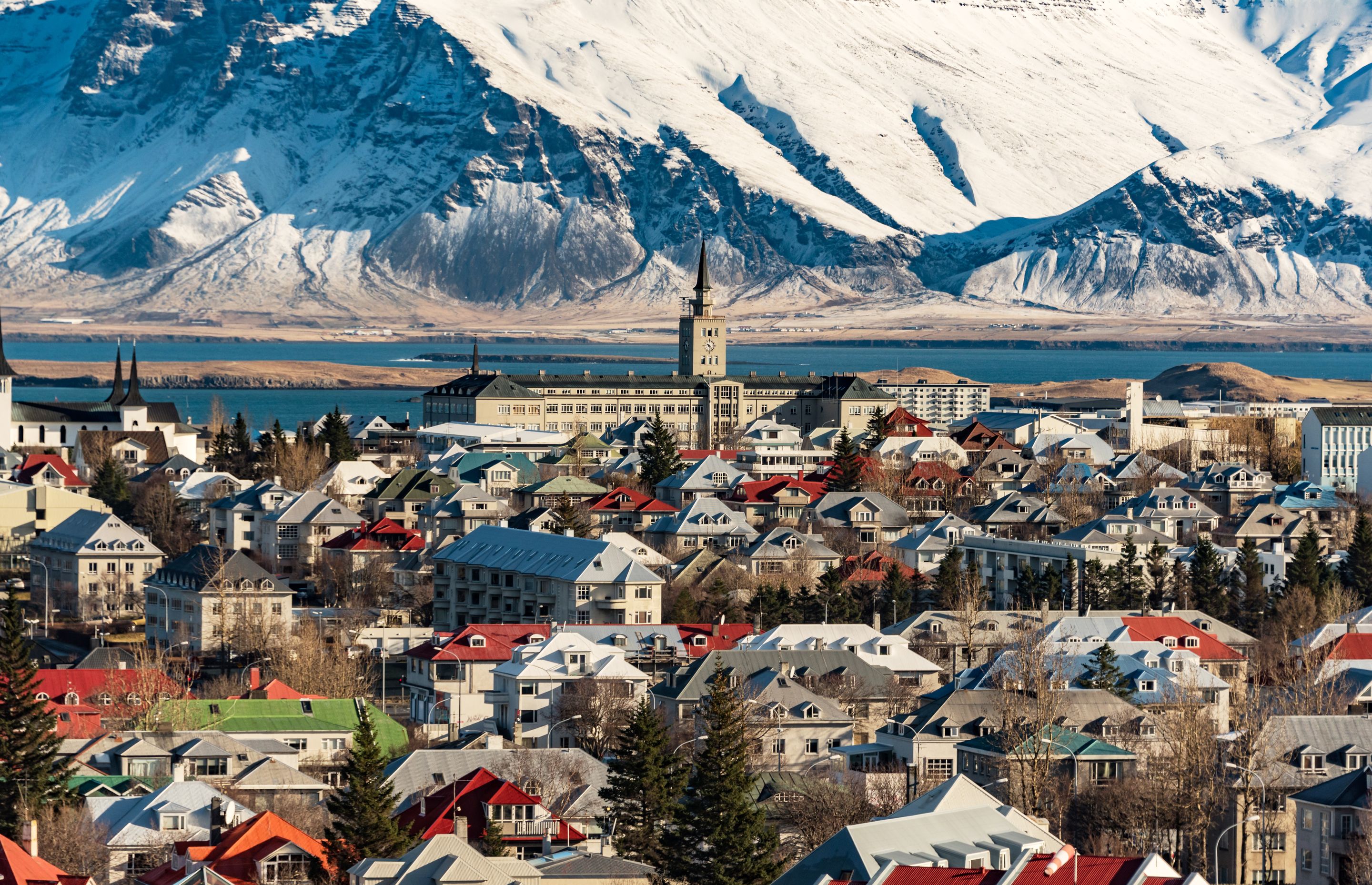
Is There Uber in Iceland?
Jump to chapter
If you're planning a trip to Iceland, you're probably excited about all the magnificent things you’ll see. Volcanic craters, lava fields, glaciers, and waterfalls await you. But, as part of your planning, you’re probably thinking about how to get around the country.
As part of that question, you probably wonder: Is there Uber in Iceland? The answer is short and plain: no, there isn’t. But that doesn’t mean you’re out of options. In this guide, we’ll give you ideas about how to move around the country.
Key Takeaways
- There are no Uber, Lyft, or similar companies in Iceland.
- There are regular taxis, but they can be expensive.
- The best way to move around the country when you’re visiting is by renting a car.
Why Is There No Uber or Lyft in Iceland?
Unlike many other countries, Iceland doesn’t have Uber or Lyft. The absence of these popular services often surprises tourists, especially those who regularly use these kinds of services worldwide. But why is that the case?
The main reason is that Iceland's population is relatively small—around 375,000 people in total, with the majority concentrated in the capital, Reykjavík, and its metropolitan area. This doesn't provide a large enough market for these companies to find it financially viable. Additionally, Icelandic laws governing taxis and transportation services are strict.
Regulations in the country favor traditional taxi services, and the requirements to get a taxi license are hard. There have been attempts to bring Uber or similar services to Iceland, but they have been rejected due to these legal and logistical obstacles.
However, that doesn't mean you're stuck without transportation options. Iceland offers several ways to get around, depending on your preferences and budget.

Getting To and From Keflavik Airport
Most international flights to Iceland arrive at Keflavik International Airport, which is about a 45-minute drive from Reykjavik. Without Uber or Lyft, how do you get into the city?
One of the most popular and cost-effective options is taking the Flybus or Airport Express, which operates regular shuttle services between Keflavik and Reykjavik. These buses are timed to coincide with incoming flights and drop passengers off at different locations in the city, including the main bus terminal and some hotels.
Another option is getting a taxi to the city. There are usually long rows of taxis outside the airport waiting for customers. While this is more expensive, costing around ISK 15,000 (approximately €100 or $110), it can be convenient if you're traveling with a group or you have lots of luggage. Private transfer companies also offer pre-booked rides, which can be a nice middle ground between public transport and taxis.
This can be convenient if you’re only going to Reykjavik, but it can be a hassle if you want to explore other parts of the country. If you’re going to do so, as most tourists do, your best option is renting a car.

Car Rental in Iceland
Given the challenges of public transport, the price of taxis, and the lack of other services like Uber or Lyft, renting a car is often the best option for exploring Iceland.
If you’re planning on visiting some of the many natural monuments this country has or other cities, having your vehicle gives you the freedom and flexibility to explore everything at your own pace.
There’s a wide selection of cars you can choose from. Prices for rental cars vary based on the type of vehicle and season, but here’s a general idea:
- A small economy car, perfect for city driving or couples, starts at around ISK 6,730 (€45 or $49) daily.
- A family car, ideal for longer drives and more comfort, costs approximately ISK 8,486 (€57 or $62) daily.
- For those wanting to explore Iceland’s rural areas or the Highlands, a 4x4 vehicle is needed. They start at ISK 7,645 (€51 or $56) per day.
- If you’re traveling in a larger group, you can also opt for a minivan. These vehicles start at ISK 7,609 (€50 or $55).
Iceland’s road conditions can change dramatically, especially in winter, so make sure to choose a vehicle and the extras that fit your travel needs.
Taxis in Iceland
Taxis are widely available in Iceland, especially in Reykjavik and other larger towns. Unlike Uber, taxi services are well-regulated, and drivers must have a special license. However, taxis in Iceland are known for being expensive. A short ride within Reykjavik can cost around ISK 2,000 to 3,000 (roughly $15 to $25), depending on the distance. A trip from the city center to the suburbs or vice versa could run higher. And, as we explained before, the price for getting to or from the airport could be as high as ISK 15,000 (approximately €100 or $110).
All cabs have a taximeter, and while tipping isn’t necessary, rounding up the fare is appreciated. You can also order a taxi through apps like Hreyfill or BSR, the two main taxi services in Reykjavik.
If you plan on using taxis frequently, keep in mind that the costs can add up quickly, making it one of the most expensive ways to get around Iceland.

Public Transport in Reykjavik and Other Cities
Reykjavik and some of the larger towns in Iceland have decent public transport systems. Reykjavik, in particular, has a bus network called Strætó. Buses are a reliable and affordable way to get around, with a single fare costing about ISK 490 (around €3.25 or $3.50). You can purchase tickets on the Klappið app or pay the exact fare in cash on the bus (drivers are not allowed to give change).
If you’re planning to use buses often, it could be a good idea to get a bus pass or multi-day tickets. They are cheaper than buying single tickets each time. Buses also connect Reykjavik to nearby towns like Hafnarfjörður and Mosfellsbær.
Outside of Reykjavik, public transport has become less frequent and impractical for tourists. Bus routes to rural areas are limited, and schedules might not always align with your sightseeing plans.

Travel Tips for Getting Around Iceland
- Plan ahead: Whether it’s a rental car, taxi, or bus ticket, it’s always smart to plan your transportation in advance, especially during peak tourist seasons. This will also get you the best deals for renting a car.
- Download essential apps: The Klappið app for public buses, and taxi apps like Hreyfill, can make navigating Reykjavik easier.
- Budget for transportation: Iceland is known for being expensive, and transportation is no exception. Plan accordingly to avoid any surprises.
- Drive cautiously: If you’re renting a car, be aware of changing weather conditions, especially during winter months. Roads can be icy, and wind speeds can be high.
Conclusion
While there may be no Uber or Lyft in Iceland, there are plenty of other ways to get around. If you’re looking to explore the country, then your best option is to rent a car. If you want to move around Reykjavik, perhaps the best move would be using the public bus service. Understanding the transportation options available will make your trip smoother and more enjoyable.





